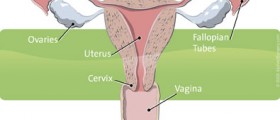
Fibroids and Estrogen and Progesterone Stimulation
The very presence of optimal amounts of estrogen and progesterone is essential for these tumors to occur and continue growing. This is why uterine fibroids may be stimulated with birth control pills and decrease in size once such treatment is discontinued. Even though scientists used to believe that only estrogen plays a role in development and growth of uterine fibroids, it is now clear that even progesterone contributes to both of theses processes.
It is confirmed that in menopause fibroid tumors decrease in size. This only happens in women who are not prescribed estrogen replacement therapy. This is yet another conformation of connection between fibroids and hormones and the effects of the particular hormones on growth of these tumors.
Therapy for Fibroids
There are many different treatment modalities for fibroids and sometimes two or even several of them are combined.
MonitoringIn women whose fibroids do not cause any symptoms or signs these tumors are only monitored. It is essential to check the speed of the growth and in case they significantly enlarge or start to cause certain problems to act timely and begin with optimal treatment.
Hormonal Therapy for FibroidsThere are many hormones which can be administered in women suffering from fibroids. For example, desirable effects can be achieved with gonadotropin-releasing hormone (Gn-RH) agonists. Furthermore, symptoms and signs of fibroid tumors can be reduced with androgens. And finally, oral contraceptives or progestins do not reduce the size of these tumors but may be helpful with unpleasant symptoms.
Surgical Treatments for FibroidsThe most invasive surgery for fibroids is hysterectomy. It includes surgical removal of the entire uterus. However, some women may undergo myomectomy, surgery which includes only the removal of the tumor. This way the uterus remains intact. Myomectomy can be performed as abdominal myomectory, hysteroscopic or laparoscopic myomectomy.
And finally, there are several more procedures which can be efficient in removal of uterine fibroids. They include myolysis, endometrial ablation, uterine artery embolization and focused ultrasound surgery.
Because these tumors grow slowly and they never turn to malignant there is plenty of time for a woman to consult her gynecologist and opt for the most convenient treatment modality.
















Your thoughts on this
Loading...